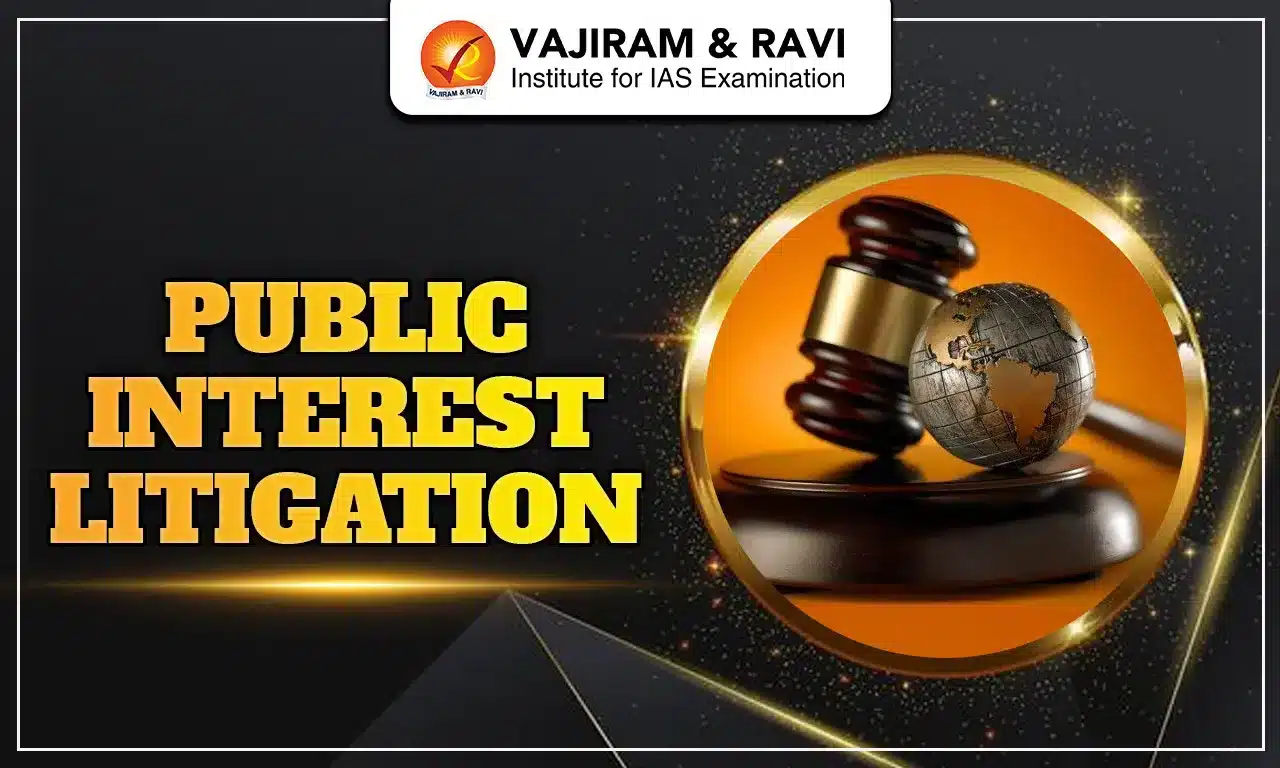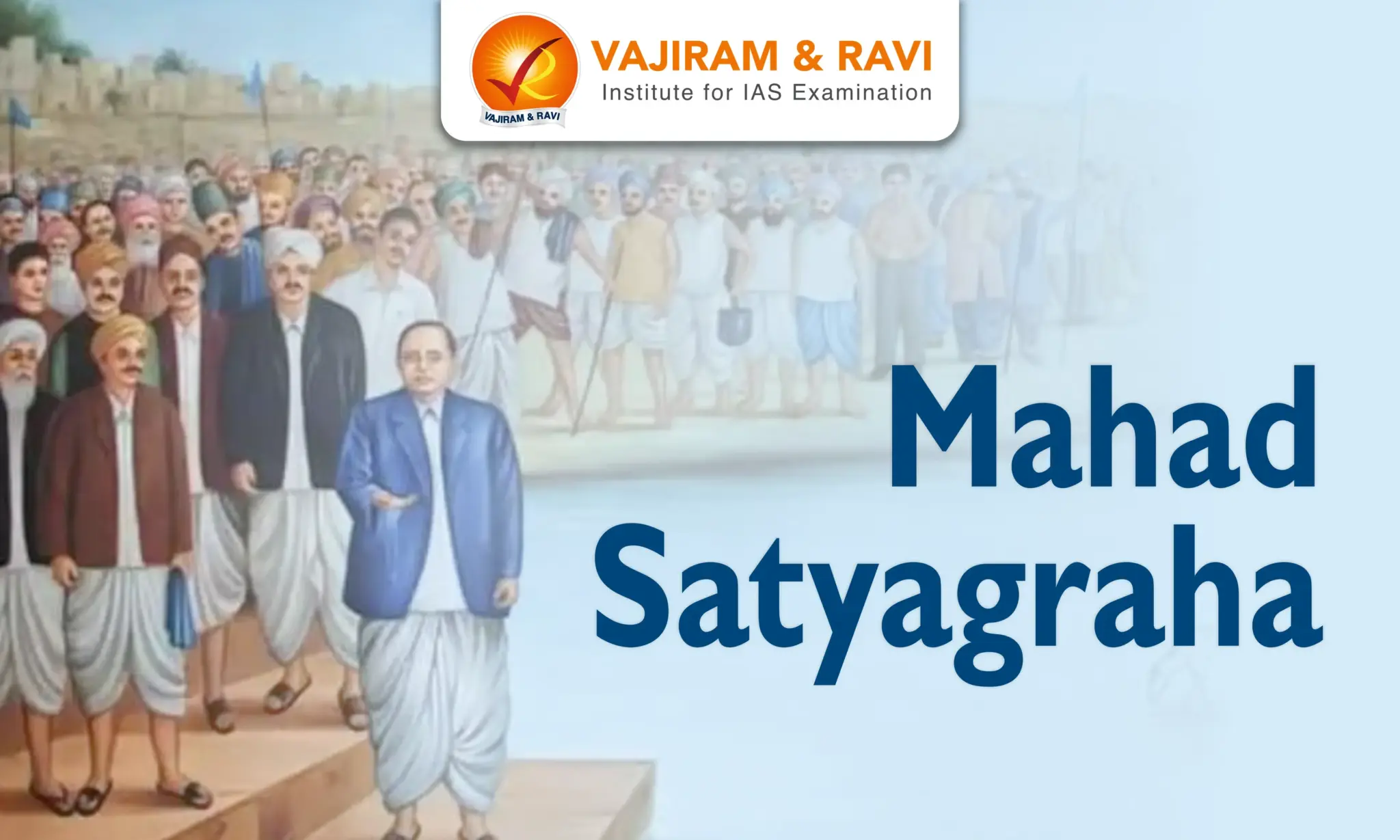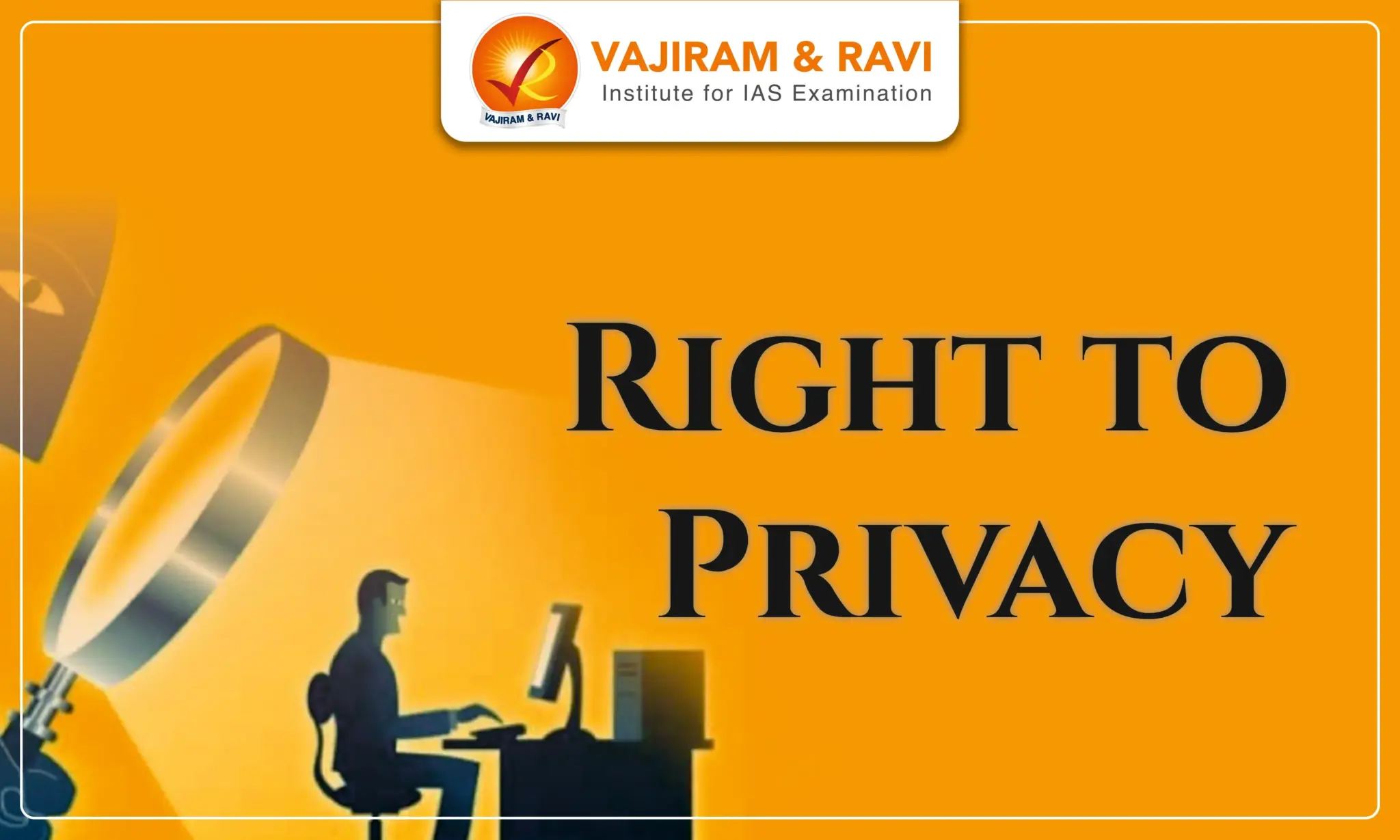What is a Public Interest Litigation (PIL)?
According to the Supreme Court (in Janata Dal v. H.S.Chaudhary, 1993) Public Interest Litigation (PIL) means a legal action started in a court of law for the enforcement of public/general interest where the public or a particular class of the public have some interest (including pecuniary interest) that affects their legal rights or liabilities.
- Public Interest is the interest belonging to a particular class of the community that affects their legal rights or liabilities.
- The concept of PIL has its origin in the USA in the 1960s.
History of PIL in India
- Mumbai Kamagar Sabha vs. Abdul Thai (1976): In this case, Justice Krishna Iyer argued that PIL had an important role to play in ensuring that the legal system served the interests of the poor and the oppressed.
- He emphasized that PIL was not a substitute for traditional litigation but rather to complement it.
- Hussainara Khatoon vs. State of Bihar case(1979): It was the first reported instance of PIL, which brought attention to the inhuman conditions of prisoners and under-trial prisoners.
- This case established the right to speedy justice as a basic fundamental right.
- S.P. Gupta vs. Union of India(1981): It was presided over by Justice P.N. Bhagawati, which led to a new era for PIL.
- The decision held that any individual member of the public or a social action group can invoke the jurisdiction of the High Courts (Article 226) or the Supreme Court (Article 32) and seek remedies for violations of legal or constitutional rights for those who are unable to do so due to social, economic, or other disabilities.
What are the features of PIL in India?
The following are some of the features of Public Interest Litigation (PIL) in India:
- PIL has neither been defined in the Constitution nor in any Indian statute.
- Constitutional provisions: The Supreme Court and the High Court under Articles 32 and 226 (authority to issue writs) of the Constitution, respectively, can hear a PIL petition submitted by any concerned individual.
- Relaxation of locus standi rule: PIL in India was made possible by the relaxation of the requirement of "locus standi”.
- Different from traditional litigation: PIL is different from traditional litigation, which is adversarial in nature and involves disputes between two parties.
- Proactive role of courts: In PIL, the role of the court is more proactive than in traditional actions and requires a more positive attitude in determining acts.
- Flexibility: While PIL allows for greater flexibility in the procedure, it must still adhere to judicial procedure and principles.
What is the significance of PIL in India?
Some of the key significance of PIL in India are:
- Widening the scope of Article 32: PIL has widened the scope of Article 32 of the Constitution (right to constitutional remedies) and has allowed public-spirited citizens to file litigation in the interest of the public at large.
- Access to justice: PIL has provided access to justice for marginalized or underrepresented communities who might otherwise not have had a voice.
- Strengthening the judiciary: PIL has helped to strengthen the Indian judiciary by allowing the court to take suo motu action to address issues of public importance.
- Social and political change: PIL has played a critical role in bringing about social and political change in India and has been instrumental in exposing and addressing various issues that affect the public at large.
- Protecting the rights of the marginalized: PIL has been used to protect the rights of the marginalized, such as bonded laborers, prisoners, and slum dwellers, and has helped to improve their living conditions.
What are some of the important judgments relating to PIL?
There have been many significant judgments related to Public Interest Litigation (PIL) in India over the years. Some of the most notable ones include
- Bandhua Mukti Morcha vs. Union of India (1984): This case dealt with the exploitation of bonded laborers and was the first PIL filed by an NGO.
- The Supreme Court ordered the release of all bonded laborers and provided them with compensation.
- Rural Litigation and Entitlement Kendra(RLEK) vs. State of Uttar Pradesh (1985): It dealt with mining activities that had led to environmental degradation, deforestation, and displacement of local communities.
- The Supreme Court recognized that the right to a healthy environment was an integral part of the right to life under Article 21 of the Constitution.
- MC Mehta vs. Union of India (1987): This case dealt with the issue of environmental pollution in Delhi and was the first PIL to be filed on an environmental issue.
- The Supreme Court replaced the strict liability principle with the absolute liability principle to protect citizens' rights.
- People's Union for Civil Liberties vs. Union of India (1997): This case dealt with the issue of custodial deaths and the right to legal aid to these victims.
- The Supreme Court held that the right to life under Article 21 of the Constitution included the right to live with human dignity, free from torture and other forms of cruel, inhuman or degrading treatment.
- Vishaka & Others v. State of Rajasthan & Others (1997): The Court laid down guidelines and norms to be observed to prevent sexual harassment of working women.
- The judgment led to the enactment of the Sexual Harassment of Women at Workplace (Prevention, Prohibition, and Redressal) Act, 2013
What are the factors responsible for the increase in PIL cases in recent times?
There are several factors that have contributed to the increase in Public Interest Litigation (PIL) in India in recent times:
- Awareness and education: Increased awareness about the legal system and human rights, as well as greater access to education, has led to a rise in the number of people who are able to understand and use the PIL mechanism to bring about social change.
- Strengthening of the legal system: The strengthening of the legal system, particularly the judiciary, has made it easier for individuals and groups to access the courts and file PIL cases.
- The Supreme Court's formulation of guidelines for PIL cases has also made the process more transparent and streamlined.
- Media coverage: The growth of the media and the increased coverage of PIL cases has brought public attention to issues that would otherwise have gone unnoticed.
- Increased activism: The rise of activism has led to a growing number of individuals and groups taking up public interest issues and using the PIL mechanism to bring about change.
- Political Support: The support of political leaders for PIL cases has also helped to increase the number of cases filed.
What are some of the issues pertaining to PIL in India?
There are several issues pertaining to Public Interest Litigation (PIL) in India, including
- Misuse of PIL: One of the main criticisms of PIL is that it is often misused for personal or political gain rather than for the public good.
- Delays in the legal system: A large number of pending cases and vacancies in the judiciary have resulted in long delays in the resolution of PIL cases.
- Lack of implementation: The lack of effective implementation of court verdicts is a major issue hindering successful implementation of PIL.
- Overburdening of the judiciary: PIL cases can place a significant burden on the Indian judiciary, as they often require extensive research and investigation. This can further lead to a backlog of cases.
- Judicial Overreach: The process of resolving socio-economic or environmental issues through PILs can sometimes result in cases of judicial overreach by the Judiciary.
What are the Supreme Court guidelines to streamline the PIL petitions?
Supreme Court guidelines on the applicability of PIL petitions
According to Supreme Court guidelines issues in 1998 and 2003, only letters or petitions related to the following issues would typically be considered as PIL:
- Bonded labor, neglected children, exploitation of casual workers, atrocities against women, harassment of prisoners, family disputes, atrocities against Scheduled Castes and Scheduled Tribes, etc.
Petitions related to the following issues would not be considered as PIL:
- Landlord-tenant disputes, service matters, and pension and gratuity, Admission to educational institutions, early hearing of cases pending in lower courts, etc
Supreme Court guidelines to prevent the misuse of PIL
Also, the Supreme Court has established the following guidelines to prevent the misuse of PIL:
- The court must support legitimate PIL and deter those filed for other reasons.
- Each High Court should establish formal rules for supporting genuine PIL and discouraging those filed for other motives.
- The court should verify the petitioner's credentials before proceeding with the PIL.
- The court should be fully satisfied that the matter of the petition is in the public interest.
- The court should ensure that the PIL addresses real public harm or injury and that the petitioner has no personal, private, or ulterior motives.
- The court should discourage busybodies from filing frivolous petitions by imposing penalties or taking similar measures to curb frivolous PIL filed for extraneous reasons.
Last updated on November, 2025
→ Check out the latest UPSC Syllabus 2026 here.
→ Join Vajiram & Ravi’s Interview Guidance Programme for expert help to crack your final UPSC stage.
→ UPSC Mains Result 2025 is now out.
→ UPSC Notification 2026 is scheduled to be released on January 14, 2026.
→ UPSC Calendar 2026 is released on 15th May, 2025.
→ The UPSC Vacancy 2025 were released 1129, out of which 979 were for UPSC CSE and remaining 150 are for UPSC IFoS.
→ UPSC Prelims 2026 will be conducted on 24th May, 2026 & UPSC Mains 2026 will be conducted on 21st August 2026.
→ The UPSC Selection Process is of 3 stages-Prelims, Mains and Interview.
→ UPSC Result 2024 is released with latest UPSC Marksheet 2024. Check Now!
→ UPSC Prelims Result 2025 is out now for the CSE held on 25 May 2025.
→ UPSC Toppers List 2024 is released now. Shakti Dubey is UPSC AIR 1 2024 Topper.
→ UPSC Prelims Question Paper 2025 and Unofficial Prelims Answer Key 2025 are available now.
→ UPSC Mains Question Paper 2025 is out for Essay, GS 1, 2, 3 & GS 4.
→ UPSC Mains Indian Language Question Paper 2025 is now out.
→ UPSC Mains Optional Question Paper 2025 is now out.
→ Also check Best IAS Coaching in Delhi
Public Interest Litigation FAQs
Q1. Who can file a PIL in India?+
Q2. Is the word PIL mentioned in the Constitution?+

















